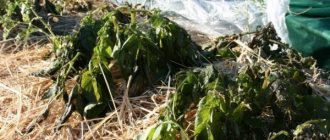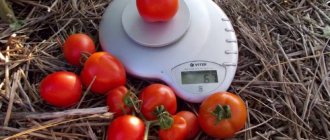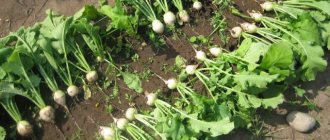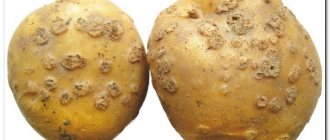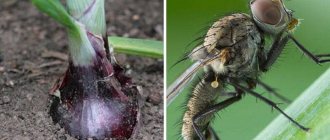The cabbage butterfly can be found in the garden in almost all regions, with the exception of colder, northern regions. Caterpillars of the cabbage butterfly damage both the leaves and heads of cabbage, destroying the crop. When cabbage whites appear in the garden, owners risk losing part of the harvest of cabbage, turnips and radishes.
The task of gardeners is to begin the fight against this pest in time, using various means of control, not forgetting about preventive measures. Various chemicals, as well as remedies prepared according to folk recipes, will help you cope with cabbage whites. Various useful tips will help protect your garden from the invasion of these pests.
Origin of the species and description
Photo: Cabbage butterfly
The name, both Latin and Russian, indicates that the main food plant of the larvae is cabbage. The wings of these lepidopterans are white, as is also evident from the name. The cabbage plant has two more close relatives - the turnip and rutabaga; they are similar in appearance, but the cabbage plant is larger. Its size can be compared with another whitethorn, also a related species, the hawthorn, but it does not have black markings.
Found throughout almost all of Eurasia, they migrate in some regions. In northern latitudes, their numbers become significantly larger in the summer, due to migrations from the southern regions. Long-distance and mass migratory flights are atypical for this species, since there is sufficient food supply everywhere, but they can travel up to 800 km.
Interesting fact: In August 1911, Professor Oliver visited a small island of about 2 acres in Norfolk. The entire space was covered with fluttering cabbage plants. They were caught in the sticky leaves of the insectivorous sundew plant. Each small plant captured 4 to 7 butterflies. When the professor saw them, almost all of them were still alive. He estimated that about 6 million individuals were caught in the traps.
If a male begins courting a female who has already been previously fertilized, she instantly dives into the grass to hide from the annoying admirer. She closes her wings and remains motionless, relying on her underside camouflage. Usually a suitor can find her, due to the pheromones emitted, quite aggressively trying to force himself on her.
At first she responds by swaying slowly from side to side. This is followed by partial opening of the wings, which prevents contact. She raises her abdomen at a steep angle (possibly releasing a chemical deterrent at the same time) to signal her rejection of the mate, and the male flies off.
Interesting fact: Males emit a characteristic odor similar to that of pelargonium.
Appearance and features
Photo: Cabbage butterfly insect
The cabbage has white wings with black corners on the front. Females have a pair of black spots on their front wings, they are brighter, and there is also a black teardrop-shaped stripe along the lower edge of the front wings. Along the anterior edge of the first wing, some scales are black; it looks like a smoky stripe. So the black tips, closer to the very corner of the wing, become lighter. In the center of the upper edge of the lower wing there is a black mark, which is not visible when the insect is sitting, since it is covered by the front ones.
The underside of the wings of females is pale greenish with dark pollen and there are spots on the forewings. Males have a more buffy underside. When the wings are folded, it serves as good camouflage. In this position, the hind wings almost cover the front ones. Their span is 5-6.5 cm. The antennae are black and white at the top. The head, chest and abdomen are black, with white hairs, and whitish below.
Video: Cabbage butterfly
The caterpillars are blue-green with three yellow stripes along the body and black dots. The pupa (2.5 cm) is yellow-green with gray-brown dots. It is belted with a silky thread, which is attached to the leaf.
Whitefish are an aposematic species, meaning they have warning colors that ward off predators. Aposematic coloration is present in the larval, pupa and adult stages. They also contain toxic glycosides from mustard oil from food plants. Mustard oils contain sulfur compounds, which impart a pungent odor to the larvae and their droppings. The unpleasant smell repels many birds and insects that might prey on them.
The insect has well-developed organs of vision and a fairly acute sense of smell. Club-like thickenings on the antennae and front legs serve as organs of touch. The female, before laying eggs, sits on a leaf of the plant, carefully feels it, testing for suitability, and only after that begins laying.
Prevention methods
The appearance of parasites can be prevented if you use simple prevention rules:
- Washing off the pupae. All wooden fences around the area should be thoroughly washed with running water to get rid of pupae stuck to them.
- Timely weeding. Weeds, especially those from the cruciferous family, need to be removed at the early stages of their appearance. Otherwise, they may attract pests.
- The right neighborhood. Radishes, radishes, and turnips should not be planted nearby. It is better to plant marigolds, lemon balm, and mint around the area, whose smell repels the butterfly. You can also plant dill or carrots between the rows, as they attract cabbage's natural enemies.
- Shelter for plants. Even at the seedling stage, cabbage can be covered with an impenetrable cloth, which will protect against cabbage infestation.
- Burning the area. In the fall, after harvesting, you need to burn the area where the cabbage grew. This will help improve soil quality and kill any remaining pupae.
- Use of prophylactic agents. During the period of active growth of cabbage, it is necessary to periodically treat the leaves with biological preparations. For example, Fitoverm.
- Tree protection. It is also better to wash nearby trees. Treat the trunk with lime.
- Scaring away. You can scare away butterflies using half an eggshell placed on a wooden post. The butterfly mistakes such a structure for another representative of the species and, deciding that the place is already occupied, flies past.
You can learn about the correct preparation of a repellent to prevent cabbage infestations by watching this video:
Where does the cabbage butterfly live?
Photo: Cabbage white butterfly
This species of Lepidoptera is distributed throughout Europe, including the islands of the Mediterranean Sea and the subarctic regions of Scandinavia. Cabbage white is also found in Morocco, Algeria, Tunisia, Libya and throughout temperate Asia up to the Himalayan mountains. It does not occur naturally outside of these regions, but was accidentally introduced to Chile.
The appearance of cabbage grass has already been recorded in some regions of South Africa. Great concern was also caused by the fact that these arthropods were discovered in 1995 in Australia, and in 2010 in New Zealand. This pest of vegetable crops has been found several times in the northeastern United States. It is unclear how the butterfly got there; perhaps it arrived illegally with cargo.
The butterfly is well adapted to migration; it has no difficulty in replenishing the population on the islands, as happens in England, where the cabbage fly flies from the mainland. They are often found on agricultural lands, parklands, vegetable gardens and farms, and love open spaces. They can land on fences and tree trunks, but always where there are sources of food nearby for the future generation. In the mountains it rises to a height of 2 thousand m.
On sunny days, adult individuals fly from flower to flower, feeding on nectar, and in cloudy weather they sit on the grass or low bushes, with their wings half-open. So they warm up, part of the sun's rays, reflected from the wings, falls on the body.
Measures to combat cabbage whites
You can fight the pest using various methods, there are a lot of them. Let's look at the most effective ones. But first, some tips:
- When spring comes, the garden needs to be cleared of old weeds and grass, because butterflies like to eat them before laying eggs.
- Inspect the bottom of the cabbage every day; pests live there.
- Immediately destroy clusters of cabbage eggs.
- In the fall it is necessary to dig up the garden.
- It is better to plant cabbage early, before the butterflies begin to emerge.
The most effective method, as mentioned above, is to inspect the cabbage daily. It will not be superfluous to inspect neighboring crops, since pests can settle there too. But this method still won’t completely get rid of cabbage. Yes, and it takes a lot of energy. The best way in this case would be to use special drugs - poisons. There are a lot of means to destroy the cabbage cutworm, but insecticides such as Kinmiks and Fitoverm are considered the most effective. They will help completely neutralize these and other cabbage pests.
Kinmiks
A drug that is used to combat any type of harmful insects. It is better to treat plants with a fresh solution of poison, wetting both sides of the leaves equally. All this should be done in the morning or evening when there is no wind. It is prohibited to store it in finished form. It is necessary to work in clothes that reliably protect the body, as well as in a special bandage. Kinmiks is very dangerous for humans, so take all precautions. The powder must be diluted in 10 liters of water.
Fitoverm
Another effective remedy in the fight against garden pests. You also need to work in the absence of wind and rain, wearing protective clothing. After 6 hours, the pests will stop gnawing on the cabbage. Use 2 ml of solution for 250 ml of water.
Popular folk remedies for fighting cabbage whites
There are also folk methods of combating cabbage whites. These methods are widely used by many gardeners. They are more popular because they are absolutely safe for human health and pets. But traditional methods are less effective.
- Take 10 liters of water, always hot, add 100 grams of dry mustard. Stir well and leave for several days. After this, dilute it again with water, but this time cold, in a 1:1 ratio.
- When wormwood blooms, you need to collect it and chop it finely. Take 1 kg of grass, add a small amount of water and boil for 15 minutes. After complete cooling, add another 10 liters of water and spray the cabbage once every 7 days.
- Chamomile is also widely used and can be easily found in pharmacies. Take 1 kg of grass per 10 liters of water. Leave for half a day, then strain and add another 20 liters of water and 100 grams of soap.
As a preventative measure, you can water the garden bed with an extract from tomato leaves. Kapusyanka does not like this smell. The most important thing is to carefully inspect the leaves, this will help prevent the development of cabbage whites.
Fighting cabbage whites - video
Loading…
What does the cabbage butterfly eat?
Photo: Cabbage butterfly
The winged creatures feed on the nectar of flowers. To do this, they have a proboscis curled into a spiral. They can be seen on: dandelion, meadow greenweed, alfalfa and other flowers. Sources of spring nectar are also tenacious and milkweed, while summer broods prefer:
- thistle;
- cornflower;
- marjoram;
- I'm awake;
- scabiosis;
- hemp.
Butterflies lay their eggs on cruciferous vegetables, and they are especially attracted to different varieties of cabbage. Plants with mustard oil glucosides are important for nutrition. These substances give cabbage whites a specific smell that repels enemies.
Interesting fact: Studies have shown that the type of plant on which clutches are made is determined by the insect's previous experience. When selecting, they focus on shades of green.
The caterpillars feed cooperatively, quickly consuming leaves, leaving only veins, and then move on to neighboring plants. They are one of the main pests and cause enormous damage to the cabbage family grown in fields and private gardens.
These are different varieties and derivatives of cabbage, especially Brussels sprouts, cauliflower, kohlrabi, as well as mustard, rapeseed, a total of 79 types of cruciferous vegetables, including bedbug, zherushnik, and radish. The caterpillars are very fond of the tender leaves of nasturtium and mignonette.
Chemicals
If folk remedies are powerless, then it is recommended to resort to chemicals. Of course, it is worth choosing safer options - biological control agents. They do not harm the plant and help cope with dangerous insects. It is worth paying attention to such products as Fitoverm, Lepitotsid.
However, in large areas it is better to give preference to serious chemistry - Karbofos, Actellik. The solution is prepared strictly according to the instructions, and the plants are treated only at the stage of leaf formation.
Knowing what harm cabbage grass causes, it is necessary to carry out preventive treatment of agricultural crops in a timely manner in order to grow a good and full harvest. To get rid of insects, you can use traditional methods; if necessary, use chemicals that are prepared strictly according to the instructions. Proper planting of plants of the same species will also help to avoid pests, as well as planting flowers that cabbage does not like.
Features of character and lifestyle
Photo: Cabbage insect
Cabbage whites are one of the first to appear as soon as it gets warmer. Even on cloudy days, when there are still few other insects, they can be seen fluttering over green spaces. They have a rather powerful, wave-like flight, and over obstacles such as bushes, trees, buildings, they easily fly from above or maneuver between them.
Once cabbage whites reach a place where there are flowers, they stay there for several days. In sunny weather they make short but regular flights, stopping briefly every few seconds to drink nectar on low-growing flowers.
Two generations of butterflies grow up per season. In the southern regions, the first generation occurs in April-May, in the north - a month later. In the second period, more individuals appear; it occurs in the second half of summer. In the south, the development of another generation is possible.
Despite the fact that the caterpillar larvae live on the plant on which they feed, the pupae of these insects can be found on tree trunks, fences, walls, at some distance from the food plant. Sometimes pupation occurs on the trunk or leaf of a plant. Most often, the pupa is attached with a thread in a vertical position.
Interesting fact: Those pupae that form on the trunk or leaf of the host plant are a solid dull green, while those that form on artificial grounds are a pale yellow hue, mottled with tiny black and yellow spots.
Structure
The cabbage butterfly has a hairy body, very similar to that of the cockchafer. Consists of three departments:
- abdomen;
- head;
- chest with fused segments.
The butterfly has three pairs of legs, at the end of each of which there are very sharp claws that allow it to stay on trees and plants.
Like other butterflies, the cabbage butterfly has only a developed pair of lower chitinous jaws, which can chew even a cabbage leaf.
Social structure and reproduction
Photo: Cabbage white
Whitefish are polygamous, but most females have one partner. 2-3 days after copulation, the butterflies lay fairly large pin-shaped ribbed eggs of a pale yellow color (about 100 pieces). During the first day they become bright yellow and quite noticeable against the background of a green leaf. Ten days before the larvae hatch, the eggs darken and the shell becomes transparent.
Interesting fact: If cabbage butterflies see that other females have laid eggs on a plant, then they no longer lay their own there.
Most often, the laying is done on the back of the leaf, so it is invisible to predators and is not susceptible to solar insolation or precipitation.
During the development period, the larvae go through five instars through four stages of molting:
- The first is characterized by the fact that the larvae emerge from a light yellow egg with a soft, hairy body and a dark head.
- In the second instar, tubercles on which hairs grow become noticeable on the body.
- In the third instar they become very active, yellow-green in color with black dots, and already cause a lot of damage.
- The fourth instar is similar to the third, but the caterpillars are already larger, more active, and their body color is greenish-blue.
- At the fifth instar they become large (40-50 mm), with an elongated body and bright color. During this period, the food supply is especially important.
If the larvae do not receive the best possible food in sufficient quantities, they may die before they become butterflies. Summer individuals do not spend long in the pupal stage, and after 2-3 weeks a new white-winged specimen is born. If pupation occurs at the end of summer or autumn, then they overwinter until spring.
Interesting fact: Studies have shown that female cabbage weeds are more likely to feed on the nectar of thistles and buddleia. If their diet is dominated by legume nectar, then their larvae will not survive, since these crops do not contain nutrients that promote their development.
Natural enemies of the cabbage butterfly
Photo: White cabbage
About 80 percent of the larvae are killed by the Apanteles glomeratus, which injects its eggs into them. This happens while the caterpillars are still small. The predator's larvae hatch inside the host's body and slowly devour it, but the cabbage weed continues to live and consume food. When the wasp larvae grow, they eat the host's vital organs, killing her and burrowing through her skin.
Sometimes you can see the dry remains of a caterpillar shell on a cabbage leaf, surrounded by a cluster of up to 80 tiny yellow fluffy cocoons. The following spring, the riders emerge from their cocoons and fly in search of new cabbage white caterpillars. Having found a potential victim, the female ichneumon ichneumon probes it with her antennae to assess its size.
The size of the larva must be such that the offspring that will develop inside have enough food. An individual that is too old can turn into a pupa before the larvae of the parasitic insect develop there. The riders pierce the victim with their ovipositor and release one egg. The female can make several such injections into one caterpillar.
Many pupae, when they have just formed and their covers are still soft, are attacked by the parasitoid wasp Pteromalus puparum. She lays her eggs there. Up to 200 predatory individuals can develop in one pupa. In three weeks, the larvae develop into the cabbage pupa. If this happens in the summer, then the insects come out of it as adult insects; in the autumn, they remain to winter inside.
The cabbage white does not have a specific group of predators. They are preyed upon by a wide range of different birds. They are eaten by some mammals, rarely by reptiles, and by one insectivorous plant.
They are potential food for some:
- Hymenoptera;
- Hemiptera;
- Coleoptera;
- Diptera;
- arachnids.




